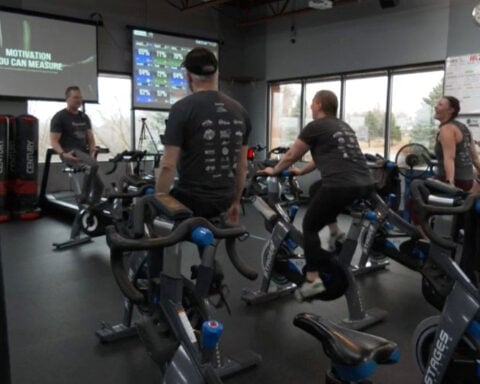Fascia, the resilient, flexible tissue that envelopes and connects our muscles, bones, and organs, has seen increasing recognition in contemporary fitness and wellness sectors. From Pilates instructors to massage therapists, everyone's focusing on making this vital tissue more pliable. A plethora of products like foam rollers, massage guns, and "fascia blasters" have flooded the market, promising the enhancement of fascia health. "The surge in fascia's popularity has been tremendous," says Christopher DaPrato, a physiotherapist at the University of California, San Francisco, who explores the relationship between fascia and athletic performance.
Until the early 21st century, the medical fraternity perceived fascia as mere packaging for more critical body components. However, ongoing research revealed fascia’s indispensable role in our functional capabilities, flexibility, and motion range.Taking good care of your face on a daily basis not only reduces chronic discomfort but also boosts your wellbeing and performance in the gym. The Director of the National Center for Complementary and Integrative Health at the National Institutes of Health, Helene Langevin, states that our knowledge of fascia is still very limited. For far too long, this part of the body has received inadequate care.
Caring for our fascia properly may become a key part of fitness and health routines. Further research could uncover new ways fascia impacts health beyond pain relief.. Both play key roles in enabling motion. The dense collagen fibers of thick fascia give shape and structure to the body. This fascia aids muscular contraction and stretching, stabilizes joints, and supports organs, blood vessels and nerves. On the other hand, the smooth, slippery loose fascia allows muscles, joints and organs to glide freely against each other as we move. An important 2007 discovery by anatomy professor Carla Stecco of the University of Padova in Italy revealed that fascia contains many nerve endings. This suggests fascia may be a significant source of pain when injured or inflamed.come overly rigid, and congeal into place, forming adhesions that limit mobility,” explains David Krause, a physiotherapist at the Mayo Clinic. Inactivity can also cause fascia to reshape itself over time.If you spend a lot of time sitting in front of a computer, the connective tissue around your neck and shoulder muscles may change, resulting in a rounded posture.
Repetitive movements, chronic stress, injury, or surgery can damage fascia, causing it to become inflamed, overly rigid, or adhered. Aging also leads to stiffened fascia. In addition, because fascia is a fibrous network, if it becomes excessively contracted, rigid, or adhesive in a specific area of the body, it might result in discomfort and impaired function in other areas by compressing or tugging in an incorrect manner.
The best way to maintain healthy, elastic fascia is to stay active. Experts also suggest specific strategies. Resistance training is ideal for maintaining fascia strength. As Dr. Langevin puts it, “A weak muscle cannot efficiently move and mobilize the fascia, and stiff and congealed fascia cannot support the muscle’s function. They complement each other, and improving one helps the other.”
The fascia in our bodies can be either thick or loose. Both are crucial for facilitating movement. Dense fascia, composed of robust collagen fibers, imparts shape to your body. Looking after our fascia could do more than ease chronic aches - it may also help athleticism and general wellness. Fascia researcher Helene Langevin with the National Institutes of Health says there's much more to learn about this often-ignored tissue in our bodies. Fascia comes in two main types: dense fascia that structures, and loose fascia that enables flexibility. The robust collagen fibers of thick fascia shape us and assist muscle control and joint stability. Slippery loose fascia lets tissues slide freely as we move. A pivotal 2007 finding was that fascia holds many nerve fibers, so injury can really hurt.
Caring for our fascia properly may become a key part of fitness and health routines. Further research could uncover new ways fascia impacts health beyond pain relief.. Both play key roles in enabling motion. The dense collagen fibers of thick fascia give shape and structure to the body. This fascia aids muscular contraction and stretching, stabilizes joints, and supports organs, blood vessels and nerves. On the other hand, the smooth, slippery loose fascia allows muscles, joints and organs to glide freely against each other as we move. An important 2007 discovery by anatomy professor Carla Stecco of the University of Padova in Italy revealed that fascia contains many nerve endings. This suggests fascia may be a significant source of pain when injured or inflamed.come overly rigid, and congeal into place, forming adhesions that limit mobility," explains David Krause, a physiotherapist at the Mayo Clinic. Inactivity can also cause fascia to reshape itself over time. If you spend most days hunched over a computer, the fascia around your neck and shoulder muscles may transform, leading to a curved posture.
Repetitive movements, chronic stress, injury, or surgery can damage fascia, causing it to become inflamed, overly rigid, or adhered. Aging also leads to stiffened fascia. In addition, because fascia is a fibrous network, if it becomes excessively contracted, rigid, or adhesive in a specific area of the body, it might result in discomfort and impaired function in other areas by compressing or tugging in an incorrect manner.
The best way to maintain healthy, elastic fascia is to stay active. Experts also suggest specific strategies. Resistance training is ideal for maintaining fascia strength. As Dr. Langevin puts it, "A weak muscle cannot efficiently move and mobilize the fascia, and stiff and congealed fascia cannot support the muscle's function. They complement each other, and improving one helps the other."
Exercises that include a range of movements, such as dancing, jumping jacks, tennis, and swimming, help lubricate the fascia. Movements that involve bouncing are especially beneficial for fascia health. "Skipping is a great activity," states Robert Schleip, head of the Fascia Research Group at Ulm University in Germany.
For those who have been inactive, it is crucial to be gentle with our fascia and gradually restore lost movement. Dynamic stretching, which contracts the muscle while lengthening it, benefits both healthy and damaged fascia. Examples include trunk twists, squats, and forward lunges. Visiting a physical therapist who can provide hands-on treatment and guide you through the best program can be beneficial.
Staying properly hydrated throughout the day can also assist in the smooth movement of fascia. Although commonly used instruments and therapies exert pressure on fascia, their long-term usefulness has not been verified by study. Foam rollers and percussion cannons can briefly relieve facial discomfort and improve flexibility by changing the local fluid dynamics. However, there is no evidence supporting the aggressive manipulation of fascia through the skin, which can cause bruising. The same applies to treatments like myofascial massage and cupping.
In conclusion, while these treatments may provide temporary relief, staying active is the most effective medicine for fascia health. Regular exercise, especially bouncing activities, resistance training, and dynamic stretching can keep fascia elastic and healthy. Proper hydration also aids fascia fluidity. Though specialized tools may offer some short-term benefits, movement is key for long-term fascia health.

 Trump has begun another trade war. Here's a timeline of how we got here
Trump has begun another trade war. Here's a timeline of how we got here
 Canada's leader laments lost friendship with US in town that sheltered stranded Americans after 9/11
Canada's leader laments lost friendship with US in town that sheltered stranded Americans after 9/11
 Chinese EV giant BYD's fourth-quarter profit leaps 73%
Chinese EV giant BYD's fourth-quarter profit leaps 73%
 You're an American in another land? Prepare to talk about the why and how of Trump 2.0
You're an American in another land? Prepare to talk about the why and how of Trump 2.0
 Chalk talk: Star power, top teams and No. 5 seeds headline the women's March Madness Sweet 16
Chalk talk: Star power, top teams and No. 5 seeds headline the women's March Madness Sweet 16
 Purdue returns to Sweet 16 with 76-62 win over McNeese in March Madness
Purdue returns to Sweet 16 with 76-62 win over McNeese in March Madness








